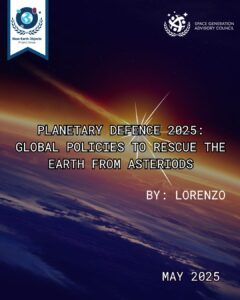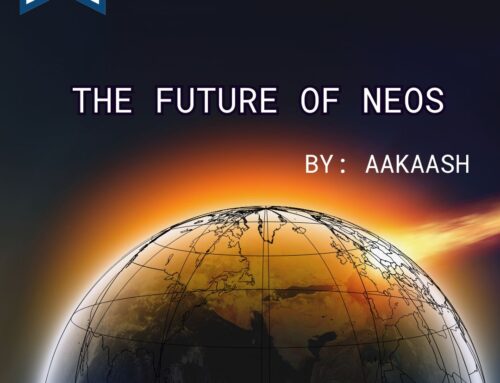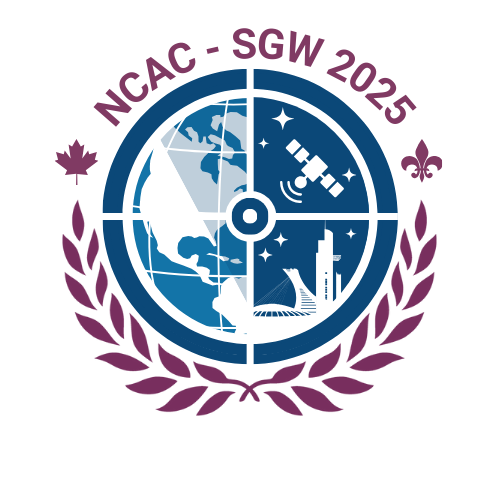As human society peers further into space, one threat remains cosily at home: asteroids. Near-Earth Objects (NEOs), asteroids and comets that come within 1.3 astronomical units of our planet, are not the province of science fiction motion pictures—they represent a very real threat to life on Earth. By 2025, planetary defence will no longer be a sideline activity of a few scientists and space organisations; it will be a global political, scientific, and strategic necessity.
From National Strategies to Global Imperatives
The United States has historically been at the forefront of planetary defence. In late 2023, NASA released its updated “Planetary Defence Strategy 2023–2032”, which offered a strong ten-year plan. The strategy is based on five strategic goals: enhancing detection and tracking of hazardous NEOs, improving NEO characterisation, advancing impact mitigation technology, improving emergency response, and expanding international cooperation.
NASA’s strategy does not stand alone. It is guided by the U.S. National Near-Earth Object Preparedness Strategy and Action Plan released by the White House in 2018, but with a stronger emphasis on coordinated cooperation with FEMA and the Department of Defence. More importantly, the updated plan encourages more integration with friends and space-faring nations.
Global Missions and Cross-Agency Cooperation
International cooperation has become the pillar of world defence. In the wake of the success of NASA’s first-ever DART mission in deflecting the trajectory of the asteroid moonlet Dimorphos in 2022, focus soon shifted towards follow-up research. That is where ESA’s Hera mission comes in—launching in 2024 and arriving in 2026, Hera will collect high-resolution post-impact asteroid system data, enabling scientists to determine how to scale up such deflection techniques.
ESA has also stepped up its planetary defence initiative. European space ministers in November 2023 signed off on an increased budget and larger mandate for the Space Safety Programme, including funding for Hera, the Flyeye early-warning telescope, and for the development of Ramses—a proposed reconnaissance mission to monitor the 2029 close flyby of the infamous asteroid Apophis.
At the same time, NASA is preparing the launch of the NEO Surveyor, a space-based infrared telescope to find and monitor 90% of NEOs larger than 140 meters in diameter. The mission, launching on SpaceX’s Falcon 9 in 2027, will give Earth years, even decades, ahead of notice in the event of a potential collision.
United Nations Steps Up for Planetary Defence
The United Nations has also stepped up with political support to acknowledge the global nature of asteroid threats. In 2024, the UN Office for Outer Space Affairs (UNOOSA) declared 2029 to be the “International Year of Planetary Defence and Asteroid Awareness,” timed to coincide with Apophis’s flyby, which will put the asteroid 31,000 kilometres away from Earth, closer than some satellites.
UNOOSA is also facilitating coordination through the International Asteroid Warning Network (IAWN) and the Space Missions Planning Advisory Group (SMPAG), which allow nations to exchange information and build cooperative mitigation plans. These entities are the diplomatic and scientific mortar that binds the global planetary defence community together.
Technology and Infrastructure: Eyes on the Sky
Current planetary defence relies on a robust system of sky monitoring, data sharing, and danger simulation. The ESA’s Flyeye telescope, featuring an insect-model inspired multi-lens, will be able to scout out extensive parts of the sky for distant, moving objects. The first Flyeye will be placed at Mount Mufara in Sicily and serve as Europe’s first warning system.
On the ground in the United States, ongoing initiatives are complemented by observatories like Pan-STARRS and the upcoming Vera C. Rubin Observatory in Chile, which will dramatically boost NEO discovery rates.
Finding a threat is only the first step. New international simulations—like ESA’s 2024 “NEOShield” exercise and FEMA’s updated asteroid impact response drills—are helping emergency planners coordinate evacuation plans, public notification, and international response systems.
The Policy Landscape: Toward Binding Agreements?
As collaboration grows, official international treaties on the defence of asteroids are still in their nascent stages. Current frameworks, like the Outer Space Treaty of 1967, are outdated when it comes to aggressive planetary defence missions. Lawyers and diplomats are now considering ways to update or expand international space law to distinguish what is a legitimate asteroid deflection mission, and who gets to interfere.
At the same time, space agencies are pushing for codification of planetary defence protocols under SMPAG, possibly to eventually mandate treaties for unfettered data exchange and commonly accepted mitigation thresholds.
Planetary defence is no longer a thinking-outside-the-box scientific endeavour—it’s a fundamental pillar of global space policy, as of 2025. The convergence of political will, technological innovation, and public awareness is remaking how humanity thinks about its long-term survival.
From Sicilian telescopes to Washington simulation drills, planetary defence is becoming an international effort. And while we have yet to experience an imminent threat from an asteroid, the groundwork laid in this defining decade could one day be why our civilisation is saved from catastrophe.
References
- NASA Planetary Defense Coordination Office (PDCO)
- ESA Space Safety Programme
- United Nations Office for Outer Space Affairs (UNOOSA) – Planetary Defense
- International Asteroid Warning Network (IAWN)
- Space Mission Planning Advisory Group (SMPAG)
Author: Lorenzo I




